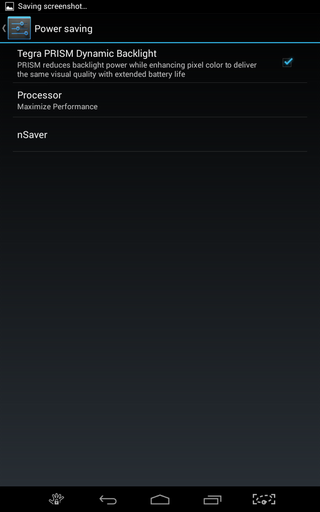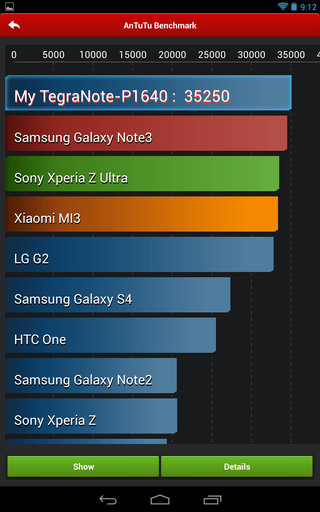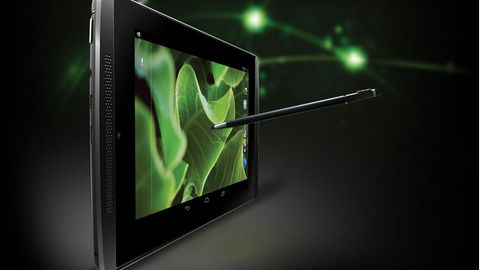Why you can trust TechRadar
Battery life
Battery life is still a big concern for many when they're considering buying any form of mobile device, and even with budget devices users still expect a reasonable amount of usage before reaching for the charger.
The Advent Vega Tegra Note 7 includes a sealed 4100mAh battery that is around the maximum size you'd expect to be crammed in to a 7-inch frame.
It's slightly larger than the latest Nexus 7, which appeared to be a very frugal device in our recent review, but considerably less than the larger iPad Mini 2 which comes with a whopping 6471mAh dual-cell battery.

Of course it's tricky to compare different devices, with different chipsets and even different operating systems, but in real-world use the Tegra Note 7 performed well, but not excellently when in maximum performance mode.
The Tegra 4 consists of 5 ARM Cortex A15 cores, four for full performance and an 'energy saver' core that kicks in when in low power or idling mode. The main four cores run at 1.8GHz, while the shadow core runs at just 696mHz so as to enable it to sip frugally at the Note 7's battery.
Fortunately, as I mentioned earlier, there's a very useful tool Nvidia has built in to Android's settings to adjust the tablet's performance which will no doubt help you get every drop out of the tablet, or run it at full-throttle speed to fly through the latest graphically intense games.
Using it as my main device for the day, I spent time checking social media, sending and receiving emails from two separate accounts, used Google Maps and enabled the inbuilt GPS on my commute to and from work, browsed the web for around half an hour and let all the background services synchronise freely.
By 6pm the battery had dropped to 58%, from where I then put the tablet through our 90 minute HD video test – played with the screen at full brightness. Once the video had finished, the Note was down to 35%, a loss of 23% comparing well to the LG G Pad 8.3 which lost 30%, and not far off the Tesco Hudl which dropped 21% during the same test.
I never felt that the Tegra Note 7 was ready to die on me at any point, even after running some intensive benchmarks there was still plenty of life to be had, leading me to believe the claimed 10-hour figure.
Benchmarks
To best understand how this particular tablet stacks up I ran a series of benchmarks to get an idea of just how fast this Tegra 4 chip really is.

Antutu tests a range of tests designed to stress the processor, graphics, memory and other factors to tally up a score of 35250 that for the Tegra Note, puts it just ahead of the Galaxy Note 3, which is driven by a fast Snapdragon 800 from Qualcomm.
It also easily beat the Nexus 7, but don't let that fool you in to thinking the Google tablet isn't anything other incredibly responsive.
Next up, Geekbench came in with a score of 932 in the single-core CPU test and 2455 in the multi-core test, to peg it alongside similar scores achieved by the 2014 Samsung Galaxy Note 10.1.
In the first of the browser-based tests, I ran the SunSpider Java test. This benchmark helps give an indication of the speed at which Javascript can be run – something that makes up a lot of app and web content. The Note mustered a time of 548.2ms, just beating the Nexus 7 that comes in around 600.
Overall the Tegra Note 7 performed remarkably well across all benchmarks for such an inexpensive tablet, easily matching scores of competitors that are up to three times pricier.

